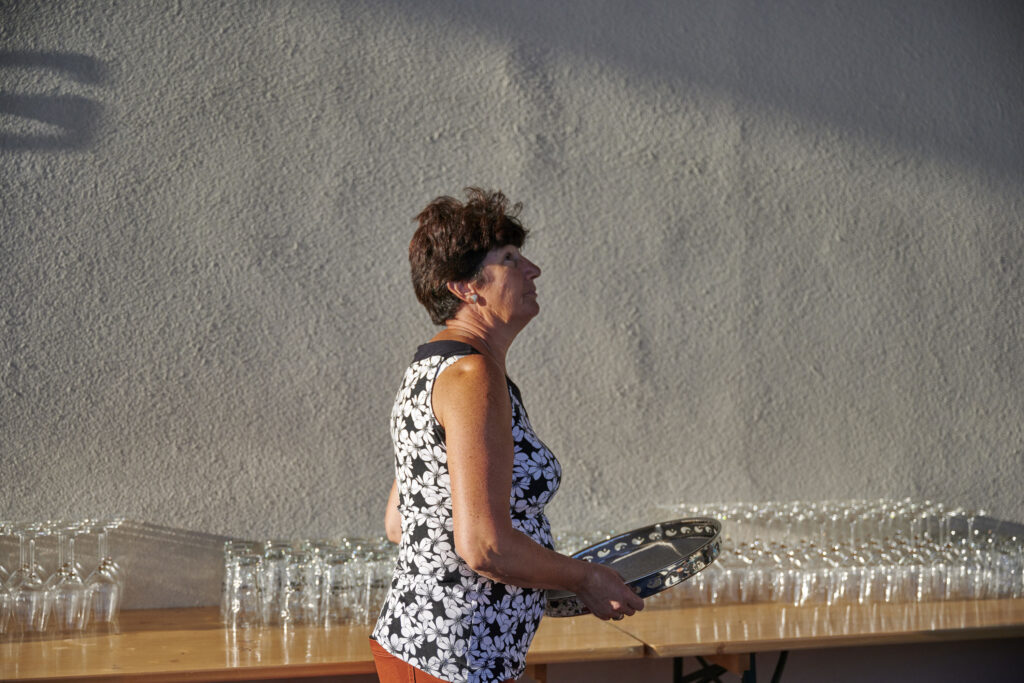Evolution instead of tradition

Our parents ran a farming business that produced both fruit and bulk wine.
2001
Steffen makes his first wine. During the mid-1990s, he planted Cabernet Sauvignon and Merlot, thus laying the foundations for “Das Kreuz” – a series of wines born with the 2004 vintage. Two years later, “Das kleine Kreuz” is released for the first time.
2007
After completing his training at the Wagner-Stempel winery in Siefersheim, Andy returns home and joins forces with his brother to run the Rings Winery together. They start to pay particular attention to Riesling, and spontaneous fermentation finds its way into their standard winemaking procedures. They greatly enlarge the barrel cellar and invest in stainless steel tanks as well as wooden barrels. One after the other, some of the region’s best parcels are added to their holdings, including the single-site SAUMAGEN vineyard in 2006 and parcels in WEILBERG as of 2009.
2010
In 2010 they discover a long-neglected parcel lying fallow in the Berntal nature reserve. The spectacular terroir consists of limestone bedrock with total southern exposure and a slope of 25%. As they clear the completely overgrown plot of scrub and restore the dry-stone walls, blood, sweat and tears flow freely. With the addition of this vineyard, the final key element emerges and joins their Riesling and Cuvées: Pinot Noir from the cool limestone soils of the northern Pfalz. In this high-elevation location, Steffen and Andy plant Pinot clones from the Burgundy region. Today, the FELSENBERG site is a candidate for VDP. GROSSES GEWÄCHS status.
2008–2012
Steffen and Andy are designated part of the VDP funding program “Top Talents in the Pfalz”. The dialog with other ambitious young winemakers, as well as with renowned members of the VDP, has a lasting influence on their work over the years that follow.
2015
The young winery becomes a full member of the VDP and is awarded the prestigious “4 grapes” rating by the “Gault Millau” wine guide. The two brothers deem their vineyards complete. But then they get an offer of some small parcels of land in the cool, limestone-rich terroir of Leistadt and simply can’t refuse. The old facility on Dürkheimer Hohl in Freinsheim finally reaches its limits…
2017
The ground-breaking ceremony for the new winery building in the hills of the “Freinsheimer Schwarzes Kreuz” site takes place.
2018
The newly built winery is surrounded by vineyards at the “Schwarzes Kreuz” site in Freinsheim, Germany. Completed in 2018, the major part of the cellar is built into a hill, using the natural cooling effects of the earth and making energy-intensive air conditioning completely unnecessary. Here, the reds and whites can mature peacefully at a constant temperature of 12-14°C. Only the press house is above ground. Its roof is constructed of wood from the nearby Hunsrück forest – a renewable resource which provides additional insulation. The photovoltaic system on the roof of the building supplies all of the winery’s electricity. The “green roof” stores rain water and, due to the resulting condensation, helps to cool the whole building, humidify the air and filter out fine dust particles. At harvest time, it is here that the crates of hand-picked grapes await processing. The generous space allows the musts and mash to be processed manually, and every single grape is handled with care. In front of the winery, three huge rainwater cisterns have been sunk into the earth. They can collect up to 60,000 liters of rainwater, which is then used to irrigate the green areas surrounding the winery as well as to nourish and protect the grapevines themselves.

STEFFEN
“Our winery has existed since 2001, the year of my first vintage. It evolved out of our parents’ fruit farm and bulk wine business. For me, it was never an option to leave things as they were, so I began to conscientiously move in a new direction. I sold or exchanged vineyards and, whenever possible, bought or signed long-term leases on vineyards in the best locations, such as Kallstadt and Ungstein. Wooden barrels found their way into my cellar. During the mid-1990s, we planted Cabernet and Merlot in Freinsheim’s warm micro-climate, and this laid the foundations for our “Das Kreuz” wine series. Yields were reduced dramatically, much to the wonder of our parents, and this became a constant, lively topic of discussion.”

ANDy
“After I completed my training in 2006, I couldn’t wait to join my brother in his new endeavor. Our vineyard acreage had grown, and there was more than enough work. I also had a lot of ideas of my own. Working with Daniel at the Wagner-Stempel winery in Rheinhessen, I had learned a lot about Riesling and spontaneous fermentation. So with complete confidence in our vineyards and the quality of our hand-picked grapes, I allowed our musts to ferment spontaneously and placed them in large, traditional wooden barrels. Then I began to think, ‘If this works so well for whites, why not for reds as well?’ Our mash ferments at its own pace, with natural yeasts and free of additives. The individual character of each wine emerges and gains subtlety and depth. Refining the elegance and finesse of our Pinots is my greatest passion, so I continuously make small adjustments as I contemplate how to make it even better.”
Family & Team
None of this would be possible without our team – clearly, since there is no way we could manage all the work alone! Our winery is a family-run business. Steffen is responsible for the vineyards, and Andy’s the chief winemaker. We don’t employ a cellar master or vineyard manager because we love the jobs far too much to delegate them to others! All of our employees are capable and likeable people, and we really appreciate them and their work. Each working day at noon, everyone gathers around the long table in the kitchen, and we all have the opportunity to discuss things and relax together.











